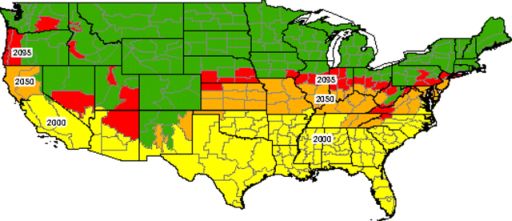
The reasons given for this high occurrence vary. In 1995 it was reported that the wide consumption of iced tea in North Carolina could be a contributing factor, because tea is loaded with calcium oxalate, which is a main ingredient in certain kinds of kidney stones. But more recent studies suggest that the consumption of tea actually reduces the risk of stone formation, in some cases by as much as 14 percent.
Another theory finds a correlation between the high incidence of kidney stone formation and the consumption of hard water. Because much of North Carolina remains rural, many people continue to use wells as their primary or only source of drinking water. The mineral content of water is thought to be a possible source of stone disease. According to some studies, excessive water hardness causes kidney stones to form and people with a history of stones should consider avoiding private wells. Still other studies suggest that water hardness has only a minor impact on stone formation. Some researchers believe that the high incidence of stones in North Carolina and in the South generally is coincidental and that the "kidney stone belt" is actually a myth.